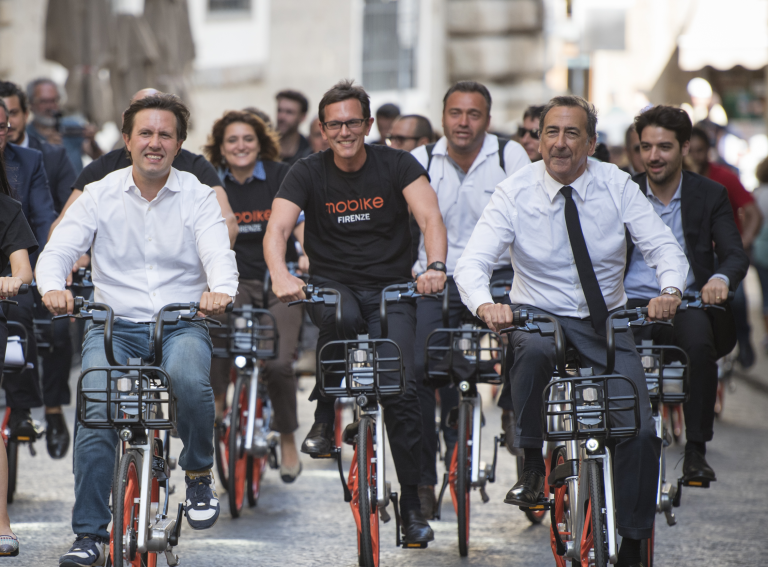From a growth in microcars and e-moped/bike hybrid vehicles, to more tenders for shared schemes in Europe, the micromobility market is set to advance rapidly in 2023.
Zag spoke with leading players from across the key segments in the industry for their predictions on the trends to watch in the year ahead.
Shared e-scooters
Shared e-scooter operator Voi expects that more European cities will use tenders to award contracts this year as an easier way to regulate operations.
Voi operates in more than 100 cities in Europe, including the three largest in the UK (Bristol, Liverpool and Northampton).
“Finland and Germany will both take this path this year, following countries like the United Kingdom and Spain,” said Matthew Pencharz, Head of Policy for UK, Ireland and the Netherlands.
Pencharz also predicts that policymakers will not impose overly restrictive regulations, such as unrealistic fees and taxes, that would hurt an operator’s viability.
“Only in this way will shared micromobility be both a viable and sustainable solution for less car dependent cities.”
Microcars expansion
Both mobility platforms Invers and Joyride predict an expansion of the microcar segment.
“An increasing number of operators are piloting carsharing with microcars,” said Enrico Howe, Market Researcher at Invers. “In many regions, there are separate regulations to normal cars with relaxed requirements for registration and licensing.”
Vince Cifani, Founder of Joyride, a global micromobility software platform that also sells vehicles, said that minicars offer efficient charging, are easier to park, and have much lower price points.
“It’s refreshing to see continued innovation and additional EV alternatives to gas-guzzling cars,” said Cifani. “Take a look at recent McKinsey stats. If interest and regulations continue to move in favour of minimobility, this segment could reach a total addressable market of $90 billion annually across China, Europe, and North America by 2030.”
Howe also pointed out that the number of new providers is growing with companies like Gowtu in Amsterdam (microcars from Biro), Qari Electric in Georgia (running on Citroën Ami), and Italian Enjoy by ENI and Wheego in Germany (running with XEV YoYos).
E-moped sharing
Invers foresees larger space for the e-moped/bike hybrid vehicles in 2023, which are often legally considered a bike, but visually a moped. The platform estimates they make up at least 15% of the global moped-sharing fleet.
The entire industry is mapped out by the company in its annual Global Moped Sharing Market Report.
“More and more moped-sharing markets introduced vehicle sharing in between the classic use cases of a bike and a moped,” said Howe. “It’s not so much a European trend currently, but countries such as India, Indonesia, Turkey or the USA have seen substantial fleets being deployed.”
Capital fund EFO Ventures Managing Partner Sean Flood said that reservations for Ottr e-moped subscription in the UK and Europe have outperformed expectations.
“This highlights a demand for this product, especially with consumer concerns of a market downturn,” said Flood.
Shared e-bikes
Shared e-bike operator HumanForest anticipates a growth in subscription-based models being utilised by the e-bike industry in 2023.
The London-based firm has become well known for its innovative in-app marketing model, which offers 10 free minutes of riding to every user every day.
“Although a number of e-bike operators offered subscription services last year, the ability to offer more benefits to regular users whilst increasing brand loyalty has an appeal that I suspect will contribute to an increase in popularity throughout the year as the micromobility sector continues to grow,” Michael Stewart, Co-Founder and Head of Marketing at HumanForest told Zag.
Last mile delivery
Micromobility will also make a stronger dent in the logistics segment, according to e-cargo bike delivery service Zedify.
Zedify was Co-Founded by Rob King who launched the UK’s first commercial cargo bike delivery service in Cambridge in 2005.
“Delivery services are creaking under the strain of price pressure, consumer expectations and gridlocked cities,” said King. “But the beacon of light offering hope for brands, delivery workers, shoppers, and logistics companies alike is micromobility.”
King expects a micromobility logistics takeover to crystallise in 2023.
IoT & connectivity
Tech firm Drover AI, a platform that uses artificial intelligence to precisely detect sidewalk, street, or bike lane riding, foresees a unification of previously separated systems into one component in the next generation of IoT technologies.
“This will help to achieve higher capabilities at lower costs – not only edge-based processing, cameras, and other sensors, but even motor controllers tuned to work with the new capabilities,” said Alex Nesic, Co-Founder and Chief Business Officer of Drover AI.
Fleet operation
Fleet optimisation solutions provider Zoba predicts that 2023 may present challenges for some micromobility companies.
The firm’s services are currently embedded with multiple industry leaders in more than 150 metro areas across North America, Europe, Asia Pacific, and the Middle East.
“In 2023, operators will continue to struggle to find funding and face difficult regulatory environments,” said Evan Fields, Zoba’s Head of Data Science. “This will put increased pressure on profitable operations, so I expect we’ll see operators exit overcrowded and low-demand markets and increase prices in the markets that remain.”
Fields explained that this will result in fewer rides and lower vehicle utilisation, which has already been picked up in the company’s data.
“In December, for example, we saw the decline in vehicle utilisation accelerate, down 10% from the previous year versus the 7% average decline we saw across all of 2022.”
But EFO Ventures pointed out that operators’ disproportionate overhead to revenue last year resulted in a flawed model, even at scale.
“2022 showed growth in the adoption of Light Electric Vehicles around the globe, but this news was overshadowed by a decrease in investment in the shared mobility space due to concerns around profitability,” said Flood.
He expects that this year, the market will see operators consolidate and investment return, favouring profitable models.
“A large driver of this will be subscription models offering all inclusive (vehicle, maintenance, and insurance) products for delivery and consumer.”




